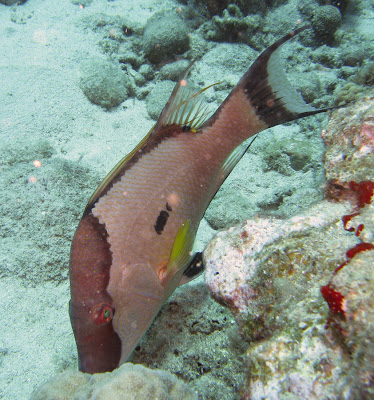
We wanted not just a fish tank, but a whole underwater garden too. Big surprise eh? As such, we needed special aquarium gravel that's a bit more like soil for healthy roots. And to really make the plants thrive, a planted tank is bottom heated, which means that heating cables need to be installed under the gravel so that the plants will have especially warm roots.
It's amazing how high tech these kinds of installations are these days. The filtration system is based on a sump design where the water overflows into the black contraption you see in the back. This helps clear the scum that inevitably floats to the top; a tank really is so much like any other community. The water then flows through a foam filter and cascades down through the blue bio-balls into the holding tank below.

The high technology doesn't end there either. Plants love carbon dioxide, so as the water is pumped back up into the tank, it's pumped through a reactor that injects carbon dioxide under pressure to dissolve it in the water. Carbon dioxide, as you'll recall from chemistry class, will make the water grow slightly acidic, which helps counteract the natural 8.0 PH of our local water. There's even a sensor that detects the PH and will try to keep it between 6.8 and 7.0 by regulating the injection of carbon dioxide.
It's a good thing the filters work so well too. Check out the swampy mess when it was first filled up.

Once the tank is set up, you can't just toss everything in and have an instant community. You have to be patient, introduce things into the system gradually, and then wait for the ecology to adjust. The first step was to introduce the plants. Check out the transformation from dirty swamp to underwater garden.

The lighting system is really cool too. There are blue diode night lights so it never gets pitch dark. In the morning, the high output florescent lights come on, and then an hour later, the high intensity metal halide lights kick in to make it as bright as direct sunlight. In the evening the process reverses. It's like a simulated day with sunrise, sunset, and finally soothing moonlight.
Of course what's good for plants is good for the algae, so introducing into the ecology something to eat the unwanted algae was the next step. For this purpose, freshwater algae eating shrimp are ideal.

We got two kinds, 300 in total, including cherry shrimp.

With the ecology in full swing and we had to wait for the tank to cycle. This is the process by which the ecology of the tank forms a closed loop as the waste products produced by one set of living things is consumed by another set of living things. The microbe population needs to adjust to help close the loop whenever any other part of the system changes significantly.
Just as there are two kinds of dirt in this universe, dark dirt to mess up light things and light dirt to mess up dark things, there are two kinds of scum. The kind that floats to the top, which we mentioned before, and the kind that sinks to the bottom, which we still need to address. The shrimp are excellent scavengers, but what we really need as well are some scum sucking bottom feeders. Yesterday we went back to Big Al's with a water sample, and since the water was clean, we got to introduce a few really effective scum sucking bottom feeders, albino bushy nose plecostomus.

It's interesting that while a fish tank really is rather a good model of a community, complete with scum sucking bottom feeders, in the case of a community tank, such creatures are quite attractive and enjoyable to have around.


















